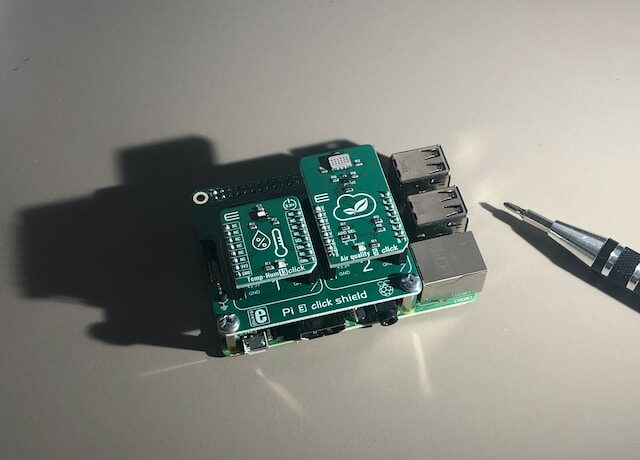Get ready to dive into the realm of TPMS sensors as you rev your engines and fasten your seatbelts! These little but mighty gadgets are essential for keeping our cars safe and operating properly. But you might wonder, what exactly are TPMS sensors? So hold on tight as we examine them in more detail, explaining how they operate, why they’re crucial for vehicle efficiency and safety, as well as how to install them. Your journey will never be the same again, so get ready to shift gears as we explore the fascinating world of TPMS sensors!

How do TPMS sensors work?
The tyre pressure in your car’s tyres is closely monitored by TPMS sensors, also known as Tyre Pressure Monitoring System sensors. They act as your personal tyre guardians, monitoring the pressure levels continuously and providing you with essential information.
These sensors assess the air pressure within each tyre using cutting-edge technology. They are typically incorporated into the wheel assembly and exchange real-time data with the onboard computer system of your car. This enables you to keep track of any changes in tyre pressure that can have an effect on performance and safety.
The fundamental objective of TPMS sensors is to guarantee that your tyres are always adequately inflated. Maintaining proper tyre pressure improves not only vehicle safety but also fuel economy and the entire driving experience.
The use of TPMS sensors, which notify you anytime there is a substantial change in tyre pressure, can help you avoid blowouts and accidents brought on by under- or over-inflated tyres by monitoring tyre pressure. They serve as an early warning system, enabling you to act quickly before any significant damage happens.
In addition to improving safety, TPMS sensors can significantly reduce fuel usage. Your tyres will roll more smoothly on the road surface when they are properly inflated, which will decrease friction and improve fuel efficiency. You can monitor and maintain proper tyre pressures for greater mileage by installing these modest but efficient gadgets in the wheels of your car.
So the next time you drive, keep in mind the crucial function performed by those understated TPMS sensors discreetly monitoring the health of your tyres!
How Are TPMS Sensors Operated?
Tyre Pressure Monitoring System sensors, often known as TPMS sensors, are compact gadgets that are essential for maintaining your car’s functionality and safety. These sensors operate by continuously checking the tyre pressure.
After being installed, TPMS sensors use wireless communication and sensor technologies to relay real-time tyre pressure data to your car’s internal computer system. Each tire’s pressure is measured by the sensors, which wirelessly transmit this information to the computer.
After analysing the information from the TPMS sensors, the onboard computer notifies you if there is a considerable departure from the advised tyre pressure levels. This enables you to respond instantly if necessary, such as appropriately inflating or deflating your tyres.
Tyre under- or over-inflation is prevented by TPMS sensors’ constant tyre pressure monitoring. Better grip on the road, increased fuel efficiency, improved braking capability, and longer tyre life are all benefits of properly inflated tyres.
TPMS sensors operate in the background to guarantee optimum tyre performance and help make driving for you and other road users safer. Therefore, the next time you notice a small warning light on your dashboard showing low tyre pressure, keep in mind that it is all due to the vital TPMS sensors that are always monitoring the situation.
Advantages of TPMS Sensors
Tyre Pressure Monitoring System (TPMS) sensors are crucial for the performance and security of your car. These little gadgets give you up-to-the-minute information on the state of your tyres’ air pressure and condition.
The increased safety on the road is one of the main advantages of TPMS sensors. Proper tyre inflation is essential for maintaining the best possible traction, handling, and braking performance. With TPMS sensors installed, you can receive an immediate alert if tyre pressure drops, avoiding potential accidents brought on by under- or over-inflated tyres.
In addition to improving safety, TPMS sensors help improve fuel economy. Your tires will roll more freely and need less energy to go forward when they are properly filled. In other words, keeping tyre pressure at specified levels will help you use less petrol and pay less at the pump.
Additionally, TPMS sensors help your tires last longer. Tyres that are underinflated or overinflated degrade more quickly and unevenly. You can maintain even wear across all four tyres and lengthen their lifespan by routinely checking tyre pressure with TPMS sensors.
By removing the need for manual tyre pressure checks using a gauge, TPMS sensors also offer convenience. Tyre pressures are automatically monitored by the real-time monitoring system so that you don’t have to.
Purchasing TPMS sensors has many benefits, including increased road safety, increased fuel efficiency, longer tyre life and more convenience.
These compact yet effective tools are essential for keeping you and your car safe while also saving you money!
The Various TPMS Sensor Types
There are two primary types of TPMS sensors that you should be familiar with: direct and indirect. Each variety has certain advantages and capacities of its own.
Direct TPMS sensors use pressure sensors located inside the tyre to continuously monitor the air pressure. You can determine with certainty whether your tyres require care thanks to the precise and reliable readings provided by these sensors. The data is then wirelessly related to a receiver within your car, notifying you if the tyre pressure falls below a predetermined level.

On the other hand, indirect TPMS sensors rely on an algorithm-based approach that uses wheel speed sensors already found in the majority of contemporary automobiles. These sensors can identify whether one or more tyres may be underinflated by keeping an eye on variations in wheel rotation speeds. Although less exact than direct TPMS systems, indirect systems nevertheless offer insightful data on tyre health.
It’s vital to remember that certain automobiles have TPMS sensors installed from the factory, but other vehicles need aftermarket installation. No matter what kind of sensor your car needs, having a functional TPMS system is essential for both road safety and efficiency.
In conclusion, having a thorough understanding of the various TPMS sensor types can help you decide whether to install or replace them in your car. Your decision to use direct or indirect systems may be influenced by personal preferences or financial restrictions. Whichever solution you select, having a functional TPMS system can significantly improve both your driving pleasure and overall road safety.
You Might Also Like
Carport Builders Dandenong: Custom Solutions for Modern Homes
Why Carports Are a Must-Have in Suburban Living For many homeowners, having a secure and covered space to park their...
Find the Best Dentist in New Lambton for Your Family
Regular trips to the dentist are the first step to a healthier smile. Your oral health is very important for...
Capital Growth Calculator Australia: Smart Tools for People Who Want to Buy Property
Do you want to make a good investment in real estate? Property investors who want to get the most out...
Creating the Right Atmosphere and Purpose: Café Furniture Matters.
Furniture in the cafes is crucial in determining the customer experience, which determines comfort and aesthetics. The right tables, chairs,...









